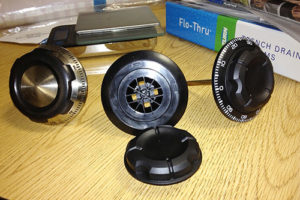 Converting components manufactured from metal to plastic can present significant cost savings over metal fabrication, and offer a great deal of design flexibility. An example of this is an OEM manufacturer of safes, who approached Port Erie to convert a steel combination dial to plastic.
Converting components manufactured from metal to plastic can present significant cost savings over metal fabrication, and offer a great deal of design flexibility. An example of this is an OEM manufacturer of safes, who approached Port Erie to convert a steel combination dial to plastic.
Their current steel dial was made in China; manufacturing required milling to size and polished to a mirror finish. Once these two processes were completed, numbers and tick marks had to be etched into the outer surface. Then the dial was hand-painted black. The benefits of converting this four-step labor intensive process into a much simpler insert molding and decorating operation was obvious.
To take full advantage of the benefits of molding required planning and an understanding of the processes’ strengths. Port Erie’s engineering team helped determine that there would be design issues to overcome in order to keep the part geometrically similar to the metal dial. The new plastic part had to meet minimum torque requirements while maintaining the design characteristics of the original dial; material selection would be critical. The design also had to accommodate a secondary operation of pad printing. In addition, the ink used had to bond to the selected dial material; this would require scratch and chemical resistance testing.


